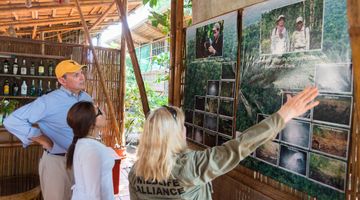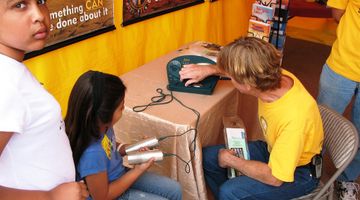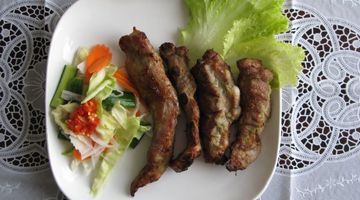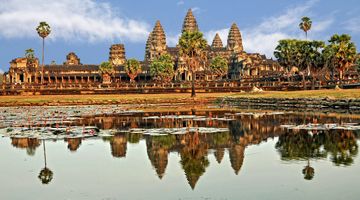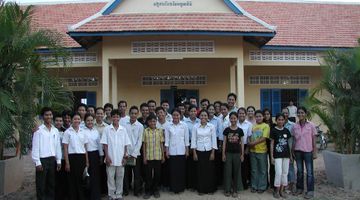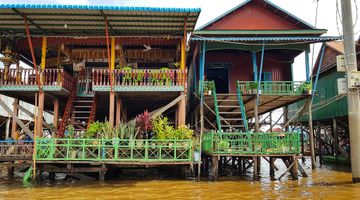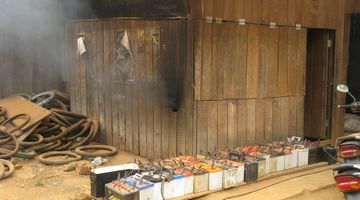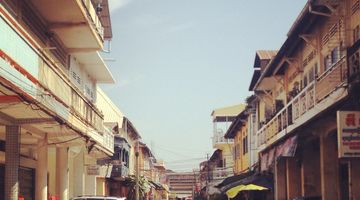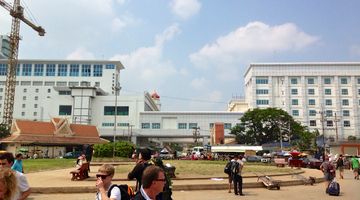Best Pepper Farms in Kampot and How to Visit Them
Kampot pepper has enjoyed a reputation as the world's best for several decades. There was a time in France when any chef worth their salt would insist on using Kampot pepper. The whole of Europe was, and still is (although to a lesser degree) obsessed with the pepper. While this may be the first time that you are hearing about this, it may just become one of those things that you can't forget – scanning the shakers at the restaurants you attend and quizzing the staff that wait on you. You should try not to do this, there’s too much else in the world that needs your attention.
Where does Kampot pepper come from?
The pepper is grown in an especially fertile and perfectly apt environment on plantations outside the sleepy town of Kampot. The highly sought after flavour is derived from the rich minerals in the soil, the sea air, and the bat guano and cow dung that is used as fertilizer. The pepper is unique in all the world, unmatched and unequalled by any other. Yes, pepper just got serious.
Kampot Pepper takes its name from the province of Kampot, in southwest Cambodia, some 140 kilometres from the capital of Phnom Penh. The pepper industry dates back to as early as the 13th century, if you can believe it. However, its international popularity and intense production was not until several centuries later. The French colonists had no doubts about their fondness for the flavourful spice. Under their rule, the country was producing a staggering 8000 tons of pepper a year.
The industry suffered significantly under the policies of the Khmer Rouge. The civil war essentially annihilated the industry that, by the end of the 1990's, was only producing 4 tons of pepper a year. The industry has recovered somewhat and is currently producing around 80 tons a year. As time has progressed, farms have continued to grow and new owners have been drawn into the industry. Local workers, schools, students, and rural families have all benefited tremendously from the recent growth in the industry.
Which varieties of Kampot pepper exist?
Of the 80 tons of pepper produced, the lion share is of the black variety. However, this is not to say that the others are any less delicious or sought after. The red variety is in fact much scarcer. The process of its curating is more high risk and leads to lower yields over the seasons. Personal preference will no doubt influence your chosen peppercorn, though. The white pepper has a more citrusy flavour. The red is powerful and fruity – and dare we say, a little bit sweet. The black pepper has undertones of eucalyptus and mint – far superior to the ground pepper you’ve been picking up from the local supermarket.
Why Kampot pepper is so special?
The pepper is special largely because of where it is grown. The quartz content in the soil of the foothills of the Elephant Mountains helps generate the unique flavour of the pepper. However, the people who tend to the crops, and the manner in which they do are equally as important as where it is grown. The process, from ground up, is purely organic (see what we did there?). No chemicals, machinery, unnatural or loveless entities come within miles of the corns as they grow. In fact, it is the most natural of substances that facilitate their growth – cow dung and bat guano. They are fervently sprinkled onto and into the soil surrounding the plants when needed.
Depending on the season, local workers go about various jobs in the aim of preparing or maintaining the perfect conditions for growth. Generations of perfectly honed practices and the lessons learned from failures inform the guiding hands of the workers. Long, dry palm trees provide shade for the beloved trees as workers and owners patiently wait three years for the trees to bear pepper. The workers manner of relating with you and the story they tell leaves you with a distinct sense of wonder.
Is it possible to visit pepper plantations in Kampot?
Kampot is ringed by plantations, most of which accept visitors. The farms vary in distance from either Kampot or Kep, but shouldn't see you enduring a trip any longer than 2 hours to get to where you're going. Some farms are as close as twenty minutes away though, so fear not.
How to get to a pepper farm?
The trip to the farms, just like each moment in our life, is part of your journey and shouldn't be wished away or made insignificant in light of your destination. The eventfulness of your trip should help with this. An often cited method of getting to the farms is by tuk-tuk – which is strongly suggested. The road is, at points, windy, bumpy, moderately treacherous and slightly tiring. It is always extremely entertaining. You must do it! Find yourself a tuk-tuk driver in Kep or Kampot and speak to them about taking you out to the farms. Negotiate a price, double check for your water bottle, and head off on your adventure!
There are a couple of companies that offer tours in Kampot that include the pepper farms as part of it. While there is nothing wrong with these tours, you will have less control over where you want to go and how long you want to spend there. Should you feel uncomfortable trying to navigate the unknown with the resources at your disposal, these tours can dramatically simplify the process for you. The prices for the tours depend entirely on the itinerary that you choose. But, you can be sure that it will cost more than making it to the farms on your own.
When is the best time to visit a pepper farm?
The best time to visit the pepper farms is relatively unaffected by the seasons of the year. Whether you visit in the pouring rain or in the dry months between October and April, the tour remains as enlightening and interesting. However, the area also has fantastic waterfalls in the National Park and great beaches along the coast. Consider your priorities and the most complimentary weather conditions.
The most popular pepper farms to visit around Kep and Kampot
The most popular pepper plantations piquing the interest of curious travellers include Sothy's Pepper Farm, La Plantation and The Vine Retreat. Shockingly, the tours of these farms are free! All that you'll need to pay for is your transport to and from the farms and the heaps of pepper that you will inevitably leave with.
The tours are incredibly informative. You will learn about the different kinds of pepper, and will likely have the taste of them in your mouth for hours to come - which, you know, has its pros and cons. You will also learn about the methods of sustainable and organic farming - which is really just so impressive - as well as the growing and harvesting seasons.
Maybe the most interesting aspect of all the tours is the story of the farms history and the people tied to it. The workers and owners have both the content and delivery that makes a good story send shivers down your spine and goosebumps rise all over your skin.
While there are a few names that are most popularly cited as the best farms to visit, one should not worry too much about missing out on another by choosing to go to one. The farms are all quite similar in what they offer, so pick one and head off!


